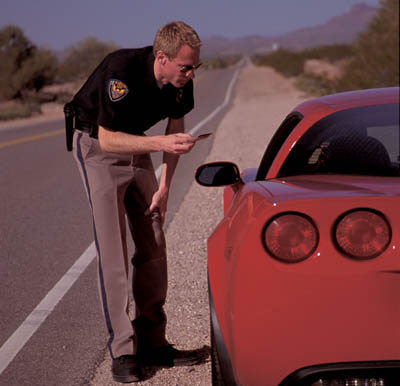Secrets to Ticket-Free Driving
Secrets to Ticket-Free Driving
By Radartest staff
Last updated: 2023

Lawmen are rolling out high-intensity speed-enforcement programs like never before. Many of these are funded by government grants and the cops know that to get more funding next year, they'll need to write a lot of tickets now.
Don't rely on folklore: if ever there was an unwritten 10-mph tolerance before an officer took enforcement action, it's gone now. In recent years we've seen tickets written for as little as 3 mph over the limit.
How best to protect yourself from overzealous enforcers? Here are our top 5 tips.
Tip 1: Protect yourself with the best radar detector you can afford
Nearly 98% of all speeding tickets are based on radar and lasers. If you're not packing a quality detector, it's a statistical certainty that you'll eventually get nailed.
The ones worth having are expensive. A $99 K-Mart Special might be better than driving with no detector, but don't expect protection from a model priced much below $300. Under ideal conditions the cheap models might bark a warning far enough in advance to be useful. But they'll do so only on perfectly flat, straight roads. And if the officer is using the lethal instant-on radar feature, forget about it.
So unless you drive exclusively on such a moonscape, invest in a high-end model. It can pay for itself in a single missed encounter. See the 10 Best Detectors.
Tip 2: Learn to use your radar detector
First-time detector users almost invariably overestimate the protection it provides. Even the best-performing detector can be neutralized by a driver's unwillingness to maintain situational awareness. Instant-on radar was designed to defeat radar detectors and it will, unless you're alert to the threat.
This means continuously scanning far ahead, looking for the heat. Unless you're on a divided highway with a median barrier, the most common threat will be a rolling cruiser coming from the opposite direction. He'll be using moving radar, triggering it briefly to sample a speed and then shutting it off again. Be alert to these weak, brief K- or Ka-band alerts as you approach the radar.
Tip 3: Never be a front-runner
Leading a pack of speeding traffic is seriously dumb idea. As the fastest car, you'll be the most desirable target. And since yours is the car closest to the trooper, which do you figure he'll target? Always let a rabbit car break trail for you—and stay back at least a quarter-mile. Any closer and a sharp officer can easily clock the rabbit and you without breaking a sweat. Study the rabbit and watch for brake lights, a sure sign of trouble.
Tip 4: Spot the opposition—before they spot you
Always scan other traffic—oncoming and same-direction—looking for one of the full-size four-door sedans, SUVs or pickups commonly used as traffic-enforcement units.


These include the late-model Ford Crown Victoria, Dodge Charger, Chevrolet Impala and Chevrolet PPV police cars. Also popular are the Chevrolet Tahoe and Ford Expedition SUVs; many state police agencies also use half-ton Ford, Chevy and Dodge pickups. Don't assume they'll be wearing light bars or the usual markings; many states use unmarked vehicles for obvious reasons.
Don't assume that only traditional police vehicles are used for speedtraps. Aside from the special nuisance posed by aircraft used for speed enforcement by highway patrols, many states use non-traditional vehicles to trap the unwary. Forget about spotting these in time; your only defense is a high-performance radar detector able to sniff them out while they're still far up the road ahead.
High Performance Radar Detectors
An impossible feat for any detector? Hardly. Some of the models in a recent test spotted this type of radar from miles away. Many also have GPS, enabling them to lock out nuisance radar signals like radar-controlled door openers.
Models with GPS also warn of red light and speed cameras, useful information for those driving in the 22 states with camera enforcement.
Tip 5: Cool it at night
Slow down after dark; the odds are stacked heavily against you and it's way too easy to waltz right into the waiting arms of a smoky bear. Your first clue will be sudden shriek from your detector, followed by flashing lights in your mirror. Speed lasers are particularly deadly at night since detectors find them almost impossible to spot until too late.









